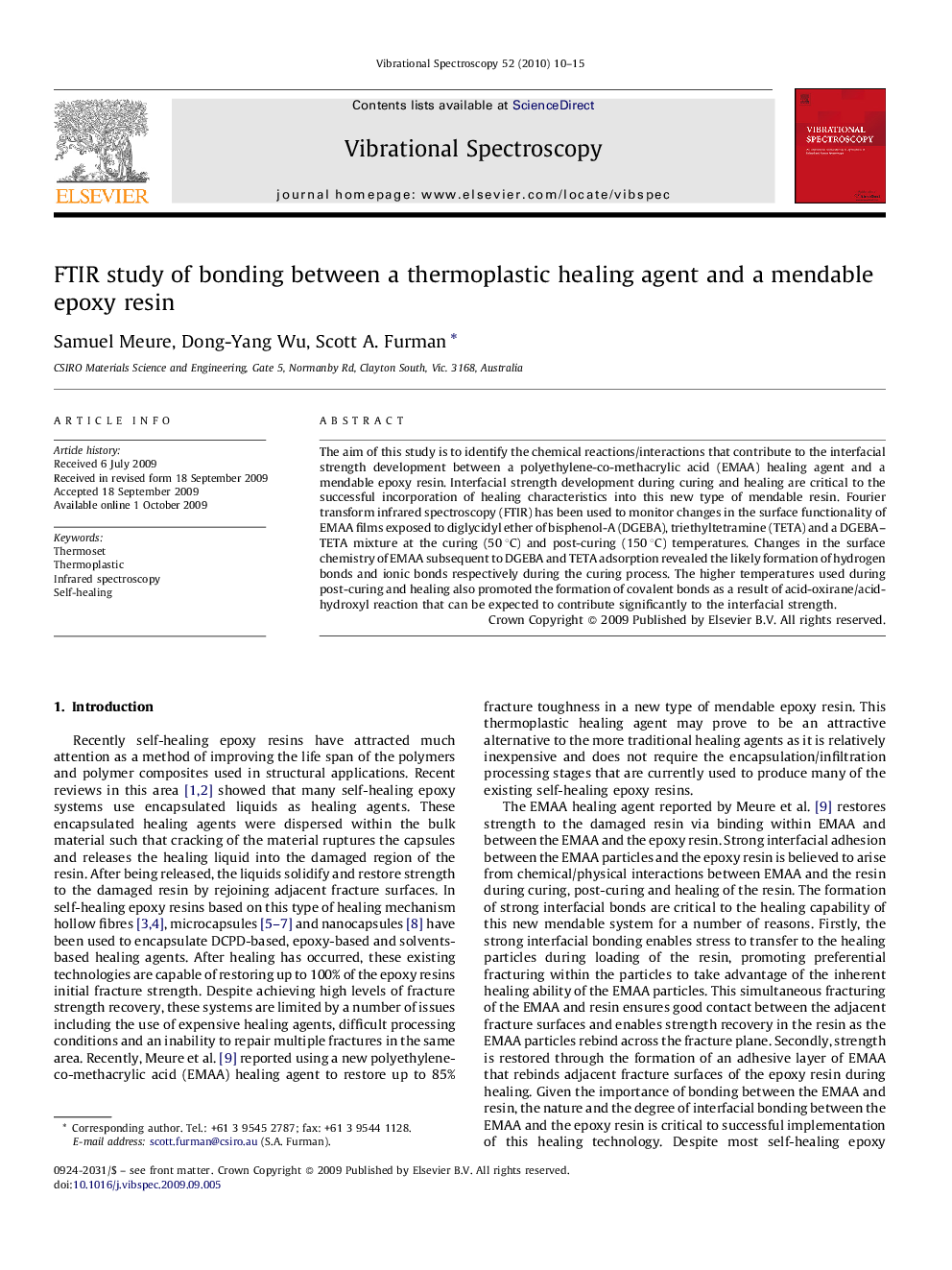| Article ID | Journal | Published Year | Pages | File Type |
|---|---|---|---|---|
| 1249692 | Vibrational Spectroscopy | 2010 | 6 Pages |
The aim of this study is to identify the chemical reactions/interactions that contribute to the interfacial strength development between a polyethylene-co-methacrylic acid (EMAA) healing agent and a mendable epoxy resin. Interfacial strength development during curing and healing are critical to the successful incorporation of healing characteristics into this new type of mendable resin. Fourier transform infrared spectroscopy (FTIR) has been used to monitor changes in the surface functionality of EMAA films exposed to diglycidyl ether of bisphenol-A (DGEBA), triethyltetramine (TETA) and a DGEBA–TETA mixture at the curing (50 °C) and post-curing (150 °C) temperatures. Changes in the surface chemistry of EMAA subsequent to DGEBA and TETA adsorption revealed the likely formation of hydrogen bonds and ionic bonds respectively during the curing process. The higher temperatures used during post-curing and healing also promoted the formation of covalent bonds as a result of acid-oxirane/acid-hydroxyl reaction that can be expected to contribute significantly to the interfacial strength.
